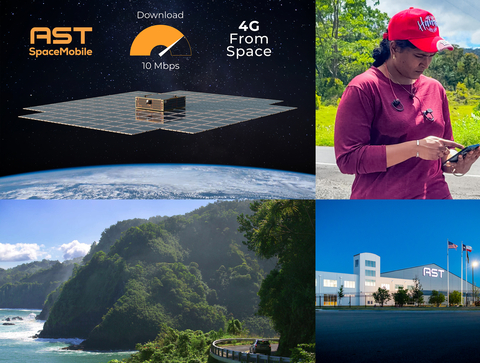AST SpaceMobile achieves 4G LTE download speeds >10 Mbps during test in Hawaii
AST SpaceMobile has announced a significant achievement during its testing phase with the BlueWalker 3 Low Earth Orbit (LEO) satellite. Engineers successfully conducted download speed tests on off-the-shelf smartphones, surpassing speeds of 10 Mbps. This achievement paves the way for space-based cellular communications at 4G speeds, marking another major milestone, according to the company. AST SpaceMobile says it is building the first and only global cellular broadband network in space to operate directly with standard, unmodified mobile devices.
In a press release, AST SpaceMobile Chairman and CEO Abel Avellan called this latest achievement another groundbreaking moment in telecom history and an important step toward AST SpaceMobile’s goal of bringing broadband services to parts of the world where cellular coverage is either unreliable or doesn’t exist today.
The 4G LTE download speed testing, which used AT&T spectrum and Nokia Radio Access Network (RAN) technology, reached initial speeds up to 10.3 Mbps, with further testing of voice calls to AT&T employees.

“Successfully reaching double-digit download speeds during satellite-to-smartphone testing takes us one step closer to ensuring people across the United States will be able to stay connected no matter their location,” said Chris Sambar, head of AT&T Network, in a statement. “This milestone wouldn’t be possible without the overall focus and determination of the teams working daily to achieve our shared space-based vision of connectivity.”
The next major test activity involves the enablement of 5G broadband.
AST SpaceMobile expects to begin initial non-continuous commercial service in 2024 after the launch of its first five planned BlueBird 1 satellites, followed by the launch of 90 satellites for global, continuous broadband and direct-to-device service.
This achievement demonstrates the feasibility of accessing broadband services in areas where cellular coverage is unreliable or nonexistent, bringing connectivity to parts of the world previously underserved.
AST SpaceMobile emphasized the significance of this milestone and its impact on global connectivity: “Achieving this milestone from an unmodified, standard cell phone on the ground connecting through our low Earth orbit satellite is another groundbreaking moment in telecommunications history and an important step toward AST SpaceMobile’s goal of bringing broadband services to parts of the world where cellular coverage is either unreliable or simply does not exist today.”
AST SpaceMobile announced on April 25th that they completed the first-ever space-based voice calls using unmodified smartphones. They achieved this through the successful deployment of BlueWalker 3, which is the largest commercial communications array ever deployed in low-Earth orbit.
According to the statement, BlueWalker 3 is designed to communicate directly with cellular devices using standard frequencies, including 5G speeds. The satellite is now fully unfolded, spanning a size of 693 square feet, which is crucial in supporting a cellular broadband network in space.
The AST SpaceMobile technology helps wireless companies improve their coverage by filling in gaps and dead zones in their networks. AST SpaceMobile has agreements and understandings with over 35 mobile network operators around the world.
References:
AST SpaceMobile Achieves Download Speeds Above 10 Mbps During Testing in Hawaii
AST SpaceMobile Deploys Largest-Ever LEO Satellite Communications Array
FCC Grants Experimental License to AST SpaceMobile for BlueWalker 3 Satellite using Spectrum from AT&T


